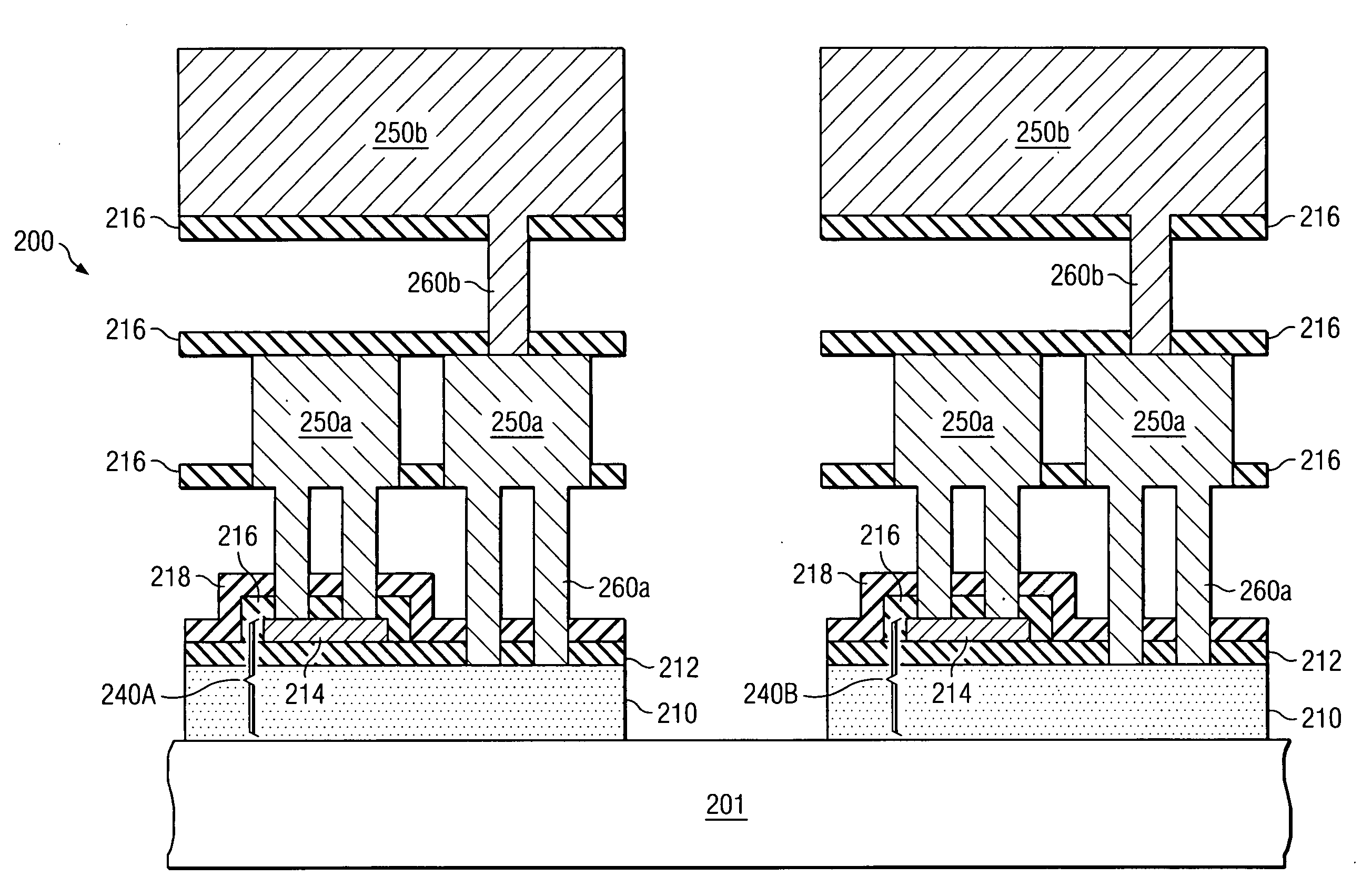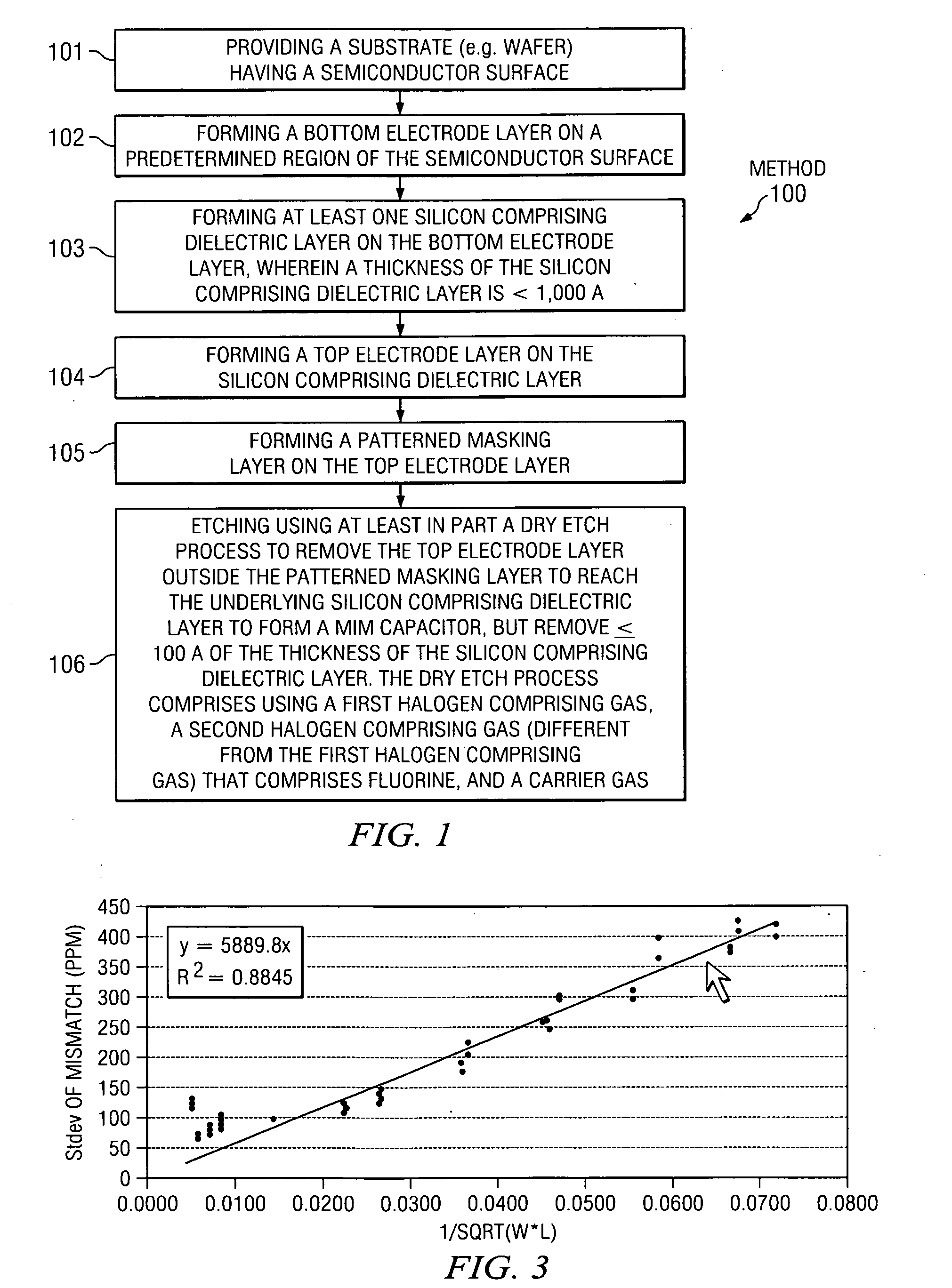Selective plasma etch of top electrodes for metal-insulator-metal (MIM) capacitors
a top electrode and capacitor technology, applied in the field of integrated circuits and ic fabrication, can solve the problems of lateral undercutting of the dielectric layer relative to the top electrode layer, adversely affecting the performance of the mim capacitor, precision and matching, and add process complexity, etc., to achieve improved capacitor critical dimension control, simplified process integration, and high selectivity
- Summary
- Abstract
- Description
- Claims
- Application Information
AI Technical Summary
Benefits of technology
Problems solved by technology
Method used
Image
Examples
example 1
[0033]A MIM capacitor was formed on a bulk silicon test wafer and the top electrode was defined by an Applied Materials (Santa Clara, Calif.) DPS™ etcher. The bottom electrode layer of the MIM capacitor comprised aluminum, the dielectric comprised a 250 A thick dielectric stack comprising silicon oxide / SiON / silicon oxide, and the top electrode layer comprised 1,800 A of TiN. The etch gases comprised Cl2=90 sccm, Ar=10 sccm, CHF3=10 sccm, and other etch parameters comprised a chamber pressure=15 mtorr, cathode 45° C., backside He pressure=10 T, power 25 W bias, and an 800 W RF source. The TiN:oxide selectivity was found to be ≧10:1 and the TiN etch rate was found to be about 1,800 A / min. A 365 nm wavelength (near ultra-violet (NUV)) was used to allow the TiN etch to endpoint on the thin silicon oxide layer.
example 2
[0034]An IC having a plurality of MIM capacitors was formed having the MIM capacitor structure and using a dry-etch only top electrode layer etch process as described immediately above. FIG. 3 shows MIM capacitor match data demonstrating capacitor matching of about 200 ppm-μm for MIM capacitors having W=L=37 μm, according to an embodiment of the invention. In comparison, for the same geometry, MIM capacitors formed using a conventional dry+wet top electrode layer etch were found to provide matching of 300-400 ppm-μm. The significant improvement in MIM capacitor matching for MIM capacitors according to embodiments of the invention is provided primarily because the dry-etch controls the CD of the MIM capacitors more tightly as compared to conventional dry+wet etch combination as described above.
[0035]Embodiments of the invention can be integrated into a variety of process flows to form a variety of devices and related products. The semiconductor substrates may include various elements...
PUM
 Login to View More
Login to View More Abstract
Description
Claims
Application Information
 Login to View More
Login to View More - R&D
- Intellectual Property
- Life Sciences
- Materials
- Tech Scout
- Unparalleled Data Quality
- Higher Quality Content
- 60% Fewer Hallucinations
Browse by: Latest US Patents, China's latest patents, Technical Efficacy Thesaurus, Application Domain, Technology Topic, Popular Technical Reports.
© 2025 PatSnap. All rights reserved.Legal|Privacy policy|Modern Slavery Act Transparency Statement|Sitemap|About US| Contact US: help@patsnap.com



